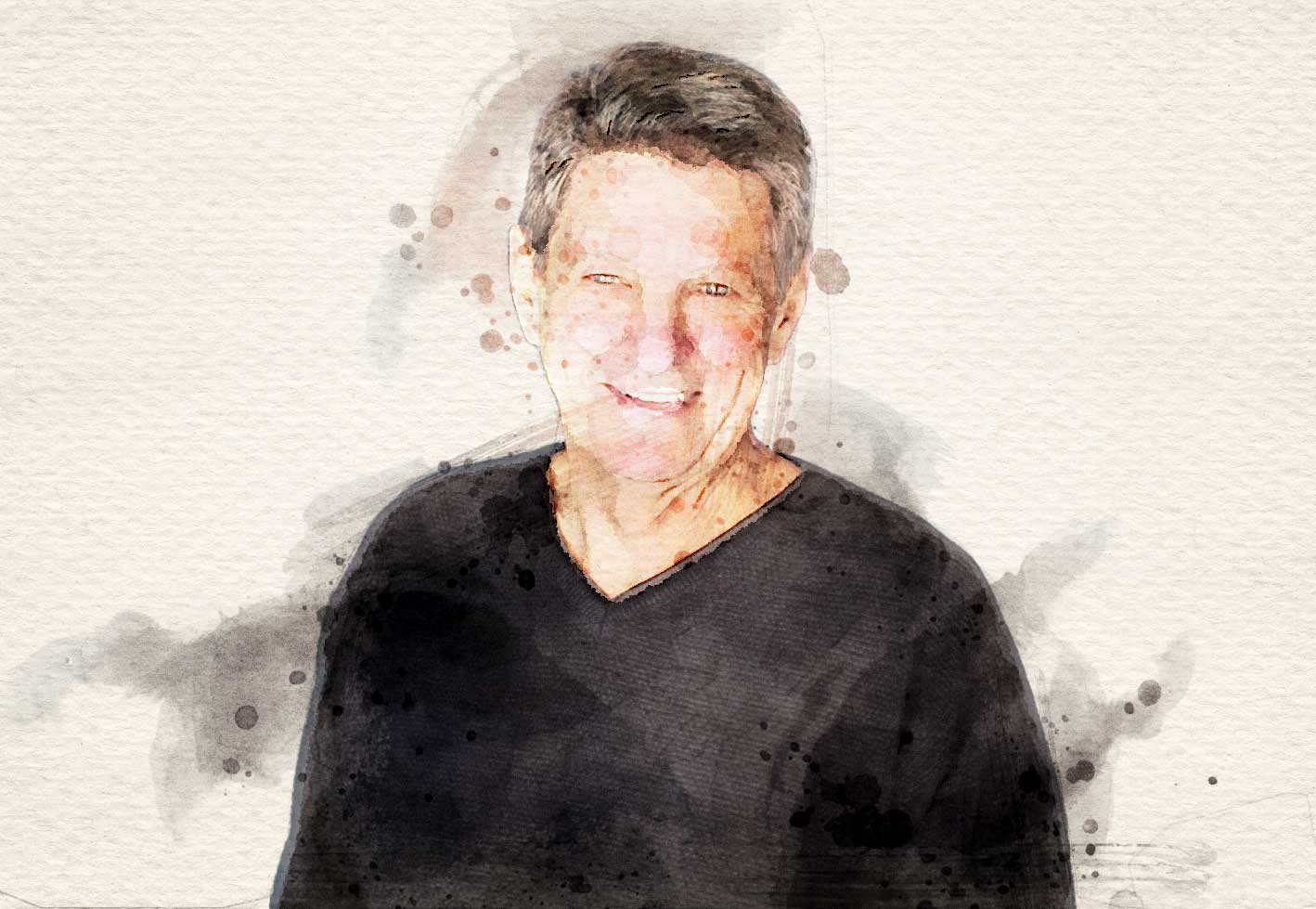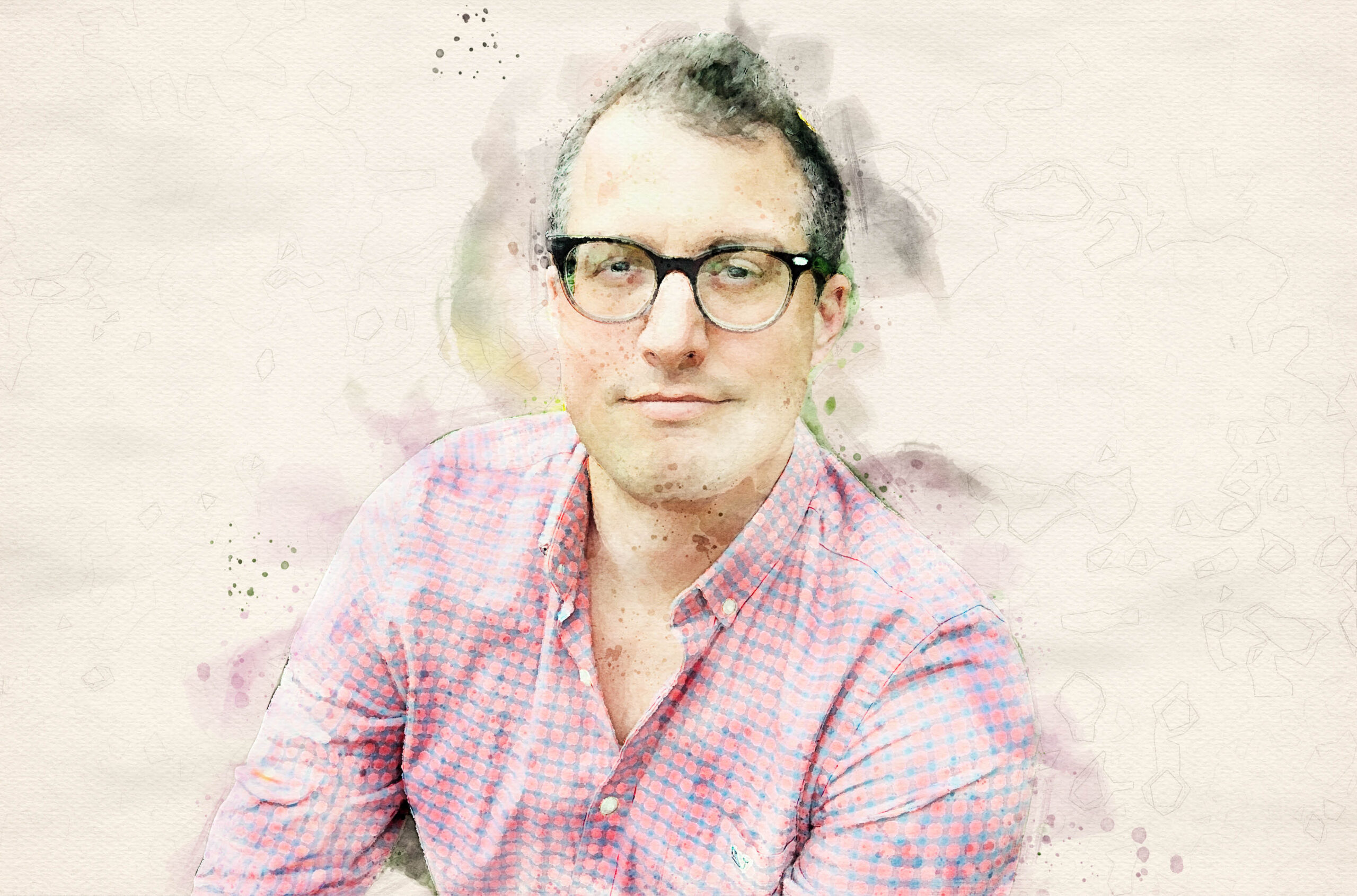The growing problem of online harassment in academe
Many universities lack adequate policies on how to deal with cyberbullying, leading to real-life consequences for some targeted academics.

The first indication of something amiss arrived via email. The contents struck Misao Dean, a University of Victoria English professor, as odd: Why would an American right-wing talk show want to ask about her work on the Canadian symbolism of the canoe?
In the next hour more emails followed. They came from around the world bearing a variety of messages, none of them kind – threats to her safety, obscene insults, calls for her to be fired. By 10 a.m., she sat, shocked, in her office. “I really didn’t know what to do or how to react.”
Dr. Dean didn’t know it then but she’d become the target of an organized campaign from the alt-right. Months before, in March 2016, she’d given an interview to CBC Radio about her book, Inheriting a Canoe Paddle: The Canoe in Discourses of English-Canadian Nationalism (University of Toronto Press, 2013). The book explored the symbolism of the canoe in Canada, arguing the canoe is widely accepted as a symbol of Canadian heritage but is overlooked as an emblem of colonial power. During the radio interview, she asked canoeists to think twice about the way they identify as Canadians when they talk about their pleasure in canoeing. “I was trying to be careful not to be offensive to canoeists, among whom I place myself.”
Nothing unusual followed the interview. But a few days before the emails began, in the fall of 2016, Dr. Dean uploaded her work to website Academia.edu, hoping to reach a broader audience. Soon after, a U.K.-based writer wrote about her research for a right-wing website called Heat Street, now defunct, quoting the CBC interview. Times Higher Education followed up on the story, as did Fox News. The cyber-harassment started almost immediately afterwards through emails to Dr. Dean and the university administration, and posts on social media.
“I was traumatized by it. My daughter (who’d come across a video on Facebook of far-right activist Milo Yiannopoulos mocking her mother) was traumatized by it,” she said.
Dr. Dean told the associate dean of her department about the situation, who in turn enlisted the help of the university administration and the public relations team. Dr. Dean says she couldn’t sleep and grew nervous when she stood in front of a class to teach. Eventually, the university’s IT team took over Dr. Dean’s email to filter out the abusive messages and campus police added her classes to their regular security checks.

Cyber-harassment, or cyberbullying, is a growing phenomenon worldwide. According to the Pew Research Center in the U.S., in 2017, roughly four in 10 Americans had experienced online harassment and 62 percent considered it a major problem. Overall, men are somewhat more likely than women to experience any form of harassing behaviour online; however, women – and young women especially – are far more likely to encounter sexualized forms of abuse.
It comes in many forms: private messages sent via email, texts and social media, or public campaigns on online platforms. Insulting, abusive and inaccurate posts spread virally on the internet, and sites like Facebook, Twitter and Reddit are notoriously slow at responding to concerns about bullying and harassment – if they respond at all. The sources can be anonymous or known, a single person or an organized campaign. In the postsecondary sector, students, faculty and staff at all levels may be targets. Bullies may be motivated for any number of reasons: personal vendetta, political leanings, sexual motivation, displeasure over grades and more.
In an effort to examine this issue in the higher-education setting, Wanda Cassidy and colleagues surveyed faculty and students at four unnamed Canadian universities. Dr. Cassidy is a professor in the faculty of education, and director of the Centre for Education, Law and Society, at Simon Fraser University. The researchers found that about one-quarter of respondents had experienced cyber-harassment in the past year – a rate equal across faculty and students. For faculty, just over half the cyber-harassment came from students and the rest from their colleagues. For students, the picture was different: strangers were the most frequent sources of harassment, followed by friends and acquaintances at the university. Instances of faculty harassing students were rare.
Dr. Cassidy, who’s led similar studies of cyber-harassment among elementary and middle-school students, says the effects are the same, regardless of the age of the victim: “Generally, they’re quite devastating.”
Victims describe a long list of mental and physical health consequences: stomach upset, sleeplessness, anxiety, depression and social withdrawal. These effects linger long after the last email or text is received. Professors talk about fears of walking into a classroom not knowing if their anonymous harasser is seated in the class in front of them. Many victims say it has harmed their careers. Students report quitting university and faculty say they have lost teaching assignments due to comments on professor-rating websites or have left institutions because of harassment from colleagues.
Dr. Cassidy and her team conducted their interviews in 2014 and published their findings in multiple sources, including the book Cyberbullying at University in International Contexts (Routledge, 2018). In the five years since their initial survey was conducted, people have become even more dependent on their smartphones, email and social media platforms as methods of communication. The result: more ways for abusers to attack their victims. Says Dr. Cassidy: “When I first started studying it, it was Facebook and Messenger. Now I have to ask my daughter, who is 26, to update me on these opportunities people use to bully each other online.”
At the same time, academics feel more pressure to disseminate their research in public forums – indeed, funding agencies may even stipulate that scholars communicate their results to the wider public. Many academics use Twitter to share their research and participate in media interviews, and their contact information is generally listed on a university’s website.
There’s no easy way to balance an academic’s public obligations against the risks that come with exposure, says Dr. Dean. Scholars have a responsibility to share their research but should feel no obligation to remain in the crosshairs of people who wish to create controversy by misrepresenting their views, she says. “My work was mischaracterized in order to become a dog whistle.”

Emma Vossen, a postdoctoral research fellow at York University, knows how it feels to be targeted. For her PhD dissertation, she examined the accessibility of games, gamer identity and games culture – a topic that put her at the centre of Gamergate, a large-scale harassment campaign targeting women in the video game industry. For years, Dr. Vossen has been subjected to waves of cyber-harassment, with spikes often coming after a TV appearance or publication of a new article.
At times, she disappeared from the spotlight. “I just basically shut everything down and didn’t talk at any conferences for over a year. In the long run, I kept going but there have definitely been periods where I’ve self-censored,” she says.
Dr. Vossen’s colleague Steve Wilcox, an assistant professor of game design and development at Wilfrid Laurier University, specializes in topics similar to Dr. Vossen, but he says he has never been subjected to cyber-harassment. Men in game studies do not appear to be the primary target of harassers, indicating that sexism and misogyny motivate much of the abuse, he says.
“This means women in game studies either face a diminished public life as a scholar – with all of the professional consequences that entails in an already over-crowded job market – or they share their work and risk harassment, abuse, invasion of privacy, and a general feeling of being unsafe and unwelcome.”
Shandell Houlden, a PhD candidate at McMaster University and a research assistant at Royal Roads University, and colleague Chandell Gosse, also a researcher at Royal Roads and a PhD candidate at Western University, are midway through a multi-year project that examines online harassment of women academics. They began with qualitative interviews of 14 women who identified as scholars and experienced cyber-harassment. After that, they moved onto a quantitative survey of academics. To date, 180 respondents have completed their survey. The pair ask scholars about incidents of harassment, how they handled it and what institutions did in response.
They are still analyzing the data, but they say a few trends have emerged: most notably, cyber-harassment has very quickly become a big problem, and navigating it is often left to individuals rather than institutions. People whose roles are precarious within academe, particularly graduate students or those in non-tenured positions, often struggle the most. These individuals are trying to become established and lack the support system that surrounds tenured faculty, says Ms. Houlden.
“They worry they will become more of a burden than they’re worth if there’s conflict around their online presence,” she says. “So that’s a big issue that remains to be addressed, particularly at an institutional level.”
Stéphane Villeneuve, a professor in the faculty of education at Université du Québec à Montréal, is heading a project investigating the cyberbullying of professors at UQÀM and Université du Québec à Trois-Rivières. He is particularly interested in the connection between cyber-harassment, gender and being a member of a visible minority. So far, about 150 faculty members have responded – half as many as Dr. Villeneuve hopes eventually to recruit.
Even at this early stage, he says he’s surprised at the responses. Several professors reached out privately to ask for advice; they’re being cyber-harassed and don’t know where to go for help, he says. One professor sent an angry email to Dr. Villeneuve telling him not to study cyber-harassment between faculty members because it’s too sensitive a subject. “I was not in complete agreement with that,” he says.
Cyber-harassment has grown so quickly that many universities lack policies on how to deal with it. Dr. Cassidy’s team at SFU examined 465 policies from 74 universities and found most institutions had policies around student conduct, discrimination and harassment, but not all were specific to online venues (their findings were published in 2015 in the Canadian Journal of Higher Education). Only one-third of policies made reference to “cyber” behaviours.
More generally, Dr. Cassidy says Canada should follow Australia’s lead and create an eSafety Commissioner. This government office provides educational resources about cyber-safety, investigates reports of abuse and gives step-by-step guidance for reporting abuse. “That’s a really interesting model that I think we in Canada need to look at,” she says. “If we learn from what’s happening internationally, we can start to make some differences.”
At Royal Roads, Ms. Houlden and Ms. Gosse say their research shows university responses to cyber-harassment are “all over the map.” Some victims feel supported, others do not, and many do not know where to turn for help. Research shows that many women minimize their online presence as a coping strategy in response to harassment. But universities that have policies requiring faculty to post their contact email online can make that difficult.
Reuben Kellen, membership services advisor to the University of Victoria Faculty Association, says it’s a tricky situation to manage. “I believe that the [university] administration might be amenable to removing contact information of faculty in specific situations, but in the absence of a clear reason and appropriate mechanisms to ensure that students could reach the faculty member in times of legitimate need, I could also see them refusing.”
Recommendations for institutional leaders
- Have a proactive communications plan for dealing with online harassment that involves university and departmental public relations and social media personnel.
- Appoint a point person or persons knowledgeable about cybersecurity, social media and harassment whom faculty or researchers can rely on for support.
- Educate departmental and university personnel about these issues by creating a one-sheet guide that includes definitions of online harassment, and links and contact information for security and counselling services, the IT department and others.
- Harness additional university resources (e.g., IT, campus police) to protect the researcher; filter email accounts, secure websites, provide additional security.
- Recognize the psychological harm that can result from online harassment and make emergency counselling services available should harassment occur.
Source: Best Practices for Conducting Risky Research and Protecting Yourself from Online Harassment, Data & Society Research Institute, 2016.
In the weeks after the provincial election in Alberta this past spring, Melanee Thomas, an associate professor in the department of political science at the University of Calgary, received a swell of bothersome emails. All were from men dismissive of her credentials and critical of her work on gender and behaviour in politics. In a thread on Twitter, Dr. Thomas urged universities to provide better incentives for researchers to engage with the public and called for more systemic tools to protect researchers from harassment.
She says she’d like to see universities create a “fly-in squad” – an organized emergency response team – that steps in when a researcher’s office phone and email is inundated with abusive messages. The team could winnow out the abuse, allowing the professor to focus their time on more useful tasks. “Especially during the term when I have to be accessible to students, it would be great to have somebody to help me manage that. I need somebody to filter this for me so that I can actually focus on my duties as assigned.”
Experts studying cyber-harassment – and the victims who’ve experienced it – say universities must find ways to help protect victims and lessen the burden placed on them. UQAM’s Dr. Villeneuve would like to see specific guidelines for how professors should respond in cases of cyber-harassment and for those policies to be widely disseminated.
“More and more we’re using technology to communicate with students, and this is a problem because they think they are more powerful behind their keyboard. They don’t have empathy. They are writing things that they would not say in person. So, we have to inform professors how to react because they are not always experts in technology and how to use it well.”
Tonya Callaghan, an associate professor in the Werklund School of Education at U of C, says universities need to think out of the box and look for ways to protect and compensate activist scholars who are regularly being harassed. The compensation could take the form of adjusting a scholar’s teaching or service responsibilities to reflect the personal consequences of this kind of work, she says.
Her recommendations come from personal experience. Dr. Callaghan identifies as a lesbian and wrote a book about homophobia in Catholic schools, Homophobia in the Hallways (University of Toronto Press, 2018). She also coordinates a program option, Advancing Healthy and Socially Just Schools and Communities, within the master of education program. She feels it’s her role to share her work about discrimination and advertise her program online, she says. All of this makes her a target of cyber-harassment – including, recently, a death threat.
“It is emotionally and psychologically consuming,” she says. “There’s such little understanding about those of us who do critical social justice work, anti-oppression work, and the toll it can take on a scholar’s body – emotionally, psychologically, physically. We’re paying a lot for this work that we’re doing. So that’s why I think there should be some proper compensation for it.”
The independent Data & Society Research Institute in New York developed a list of best practices for scholars conducting risky research who want to protect themselves from online harassment, as well as recommendations for administrators (see sidebar, “Recommendations for institutional leaders,” above). Asked what she would recommend for anyone currently experiencing cyber-harassment, Ms. Houlden says everyone should take basic security steps like using password protectors and two-step verification. Also, take a screenshot of any particular incidents as evidence, she says.
Ms. Gosse stresses that victims should treat online abuse like any other type of abuse. “Give yourself self-care in terms of seeking therapy, have a strong social network, be firm in your boundaries. Don’t feel like you can’t block somebody or report somebody,” she says.
For UVic’s Dr. Dean, things are quieter now. When the university’s public relations department became involved, they asked her if she wished to publicly challenge the harassment or just let it die down. She chose the latter. For months, the university filtered the hateful messages from her email and, eventually, the harassment did stop. Sometime later, so did her sleeplessness and anxiety.
And though the memories of the incident remain, she says it has made her an activist on the issue. She recently joined a university committee tasked with developing procedures related to cyber-harassment. She says she wants to make sure the procedures protect everyone in the academy, not just senior faculty. “I had people in my corner and it’s partly because I’ve been teaching for 30 years. [But] there are plenty of people who haven’t been, and that’s a really difficult issue we need to tackle.”












Post a comment
University Affairs moderates all comments according to the following guidelines. If approved, comments generally appear within one business day. We may republish particularly insightful remarks in our print edition or elsewhere.